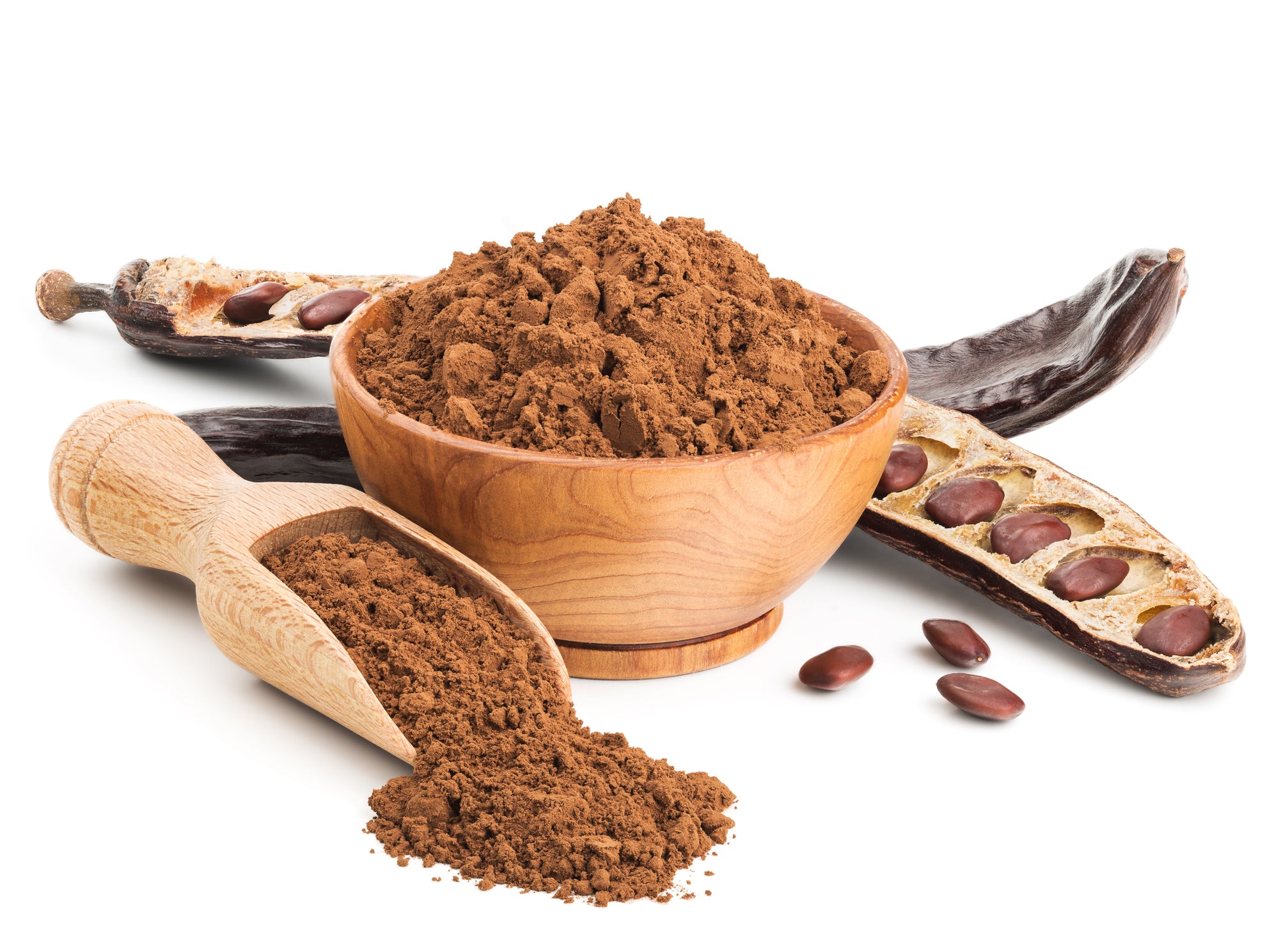Carob is also known at St. John's bread or locust pods. It is not to be confused with the locust bean which is inside the locust pod. The bean is the source of locust bean gum, a thickening agent used in numerous processed foods. Carob is made by toasting, then pulverizing the pod. It is similar to cocoa in flavour but is fat free and contains no stimulants such as caffeine and theobromine. Its sweetness comes from monosaccharides and di-saccharides. In addition to not having the negative effects of chocolate, carob is very nutritious. Carob contains as much Vitamin B1 as asparagus or strawberries; as much niacin as lima beans, lentils, or peas; and more Vitamin A than eggplant, asparagus, and beets. It also contains Vitamin B2, calcium, magnesium, potassium, and the trace minerals iron, manganese, chromium, copper, and nickel. It contains approximately 8 percent protein and is a good source of fibre. Compared to chocolate, carob is three times richer in calcium, has one third less calories and seventeen times less fat. We use carob powder in our carob soy dessert (which kids love) and the carob-glaze or carob-coating on rice carob biscuits and almond bars. We also make carob-chocolate from the simple recipe of; 200g cocoa butter, 100g carob powder, 76g unrefined brown sugar, 50g soy milk powder and 6g vanilla powder. Good with roasted almonds and cashews mixed through before pouring into a pan and setting in the fridge. Break or chop into pieces. Carob powder can be substituted for cocoa powder in any recipe, either weight for weight, or one and a half times the weight of cocoa called for. Carob powder is generally sweeter and less bitter than cocoa. Carob powder is popular when used to make a tiramisu style dessert by dipping dried bread in a sauce made with carob powder, unrefined brown sugar and water, layering it in a dish, then smothering it in vanilla soy dessert , with a sprinkling of frozen or fresh berries in each layer. Swirl extra carob sauce on top for effect.




